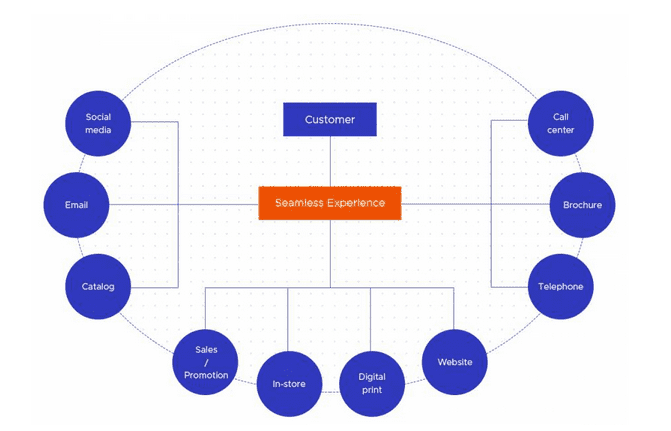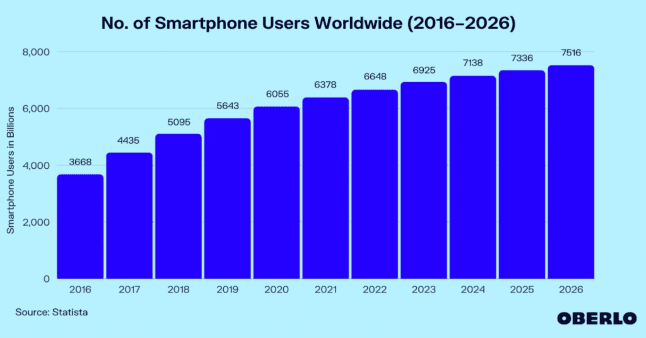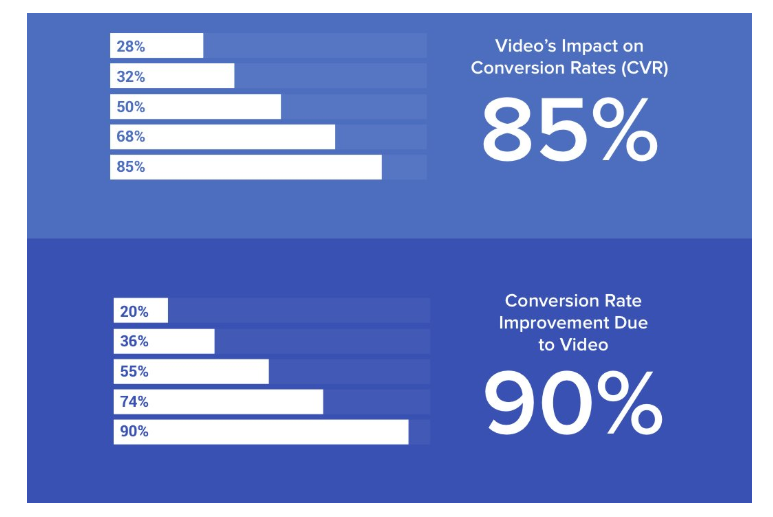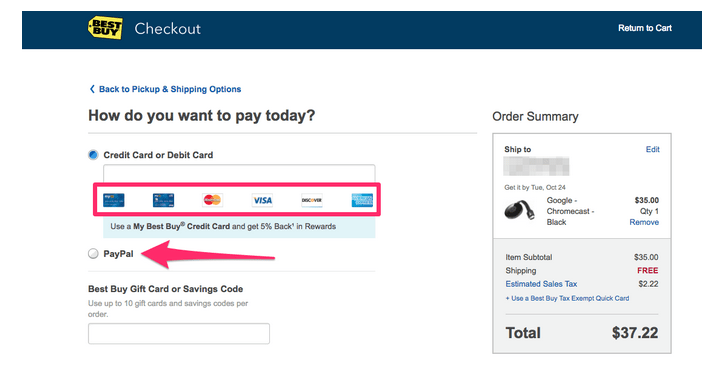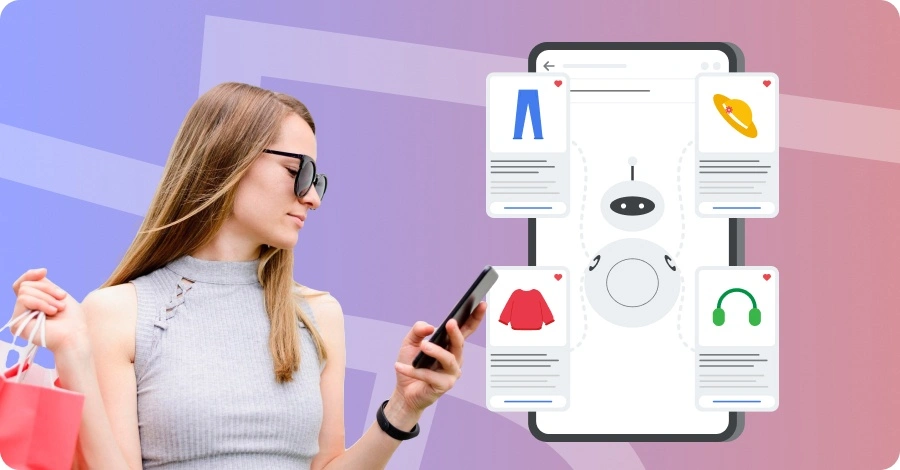Top Emerging Ecommerce Trends to Grow Sales in 2025
- December 22, 2016
- 14 mins read
- Listen

The emergence of new technologies in the eCommerce sector has led to paradigm shifts in recent years. Today, with the headway in e-commerce trends, it has become easier for businesses to reach out to their customers anytime, anywhere.
Going forward the global retail e-commerce revenue will amount to $4.88 trillion. The high-tech innovations have transformed the way people shop and retailers market a product/service.
But the question comes how can you stay competitive?
In order to differentiate yourself, you need to be proficient in the latest e-commerce trends in 2025, which are often a result of advancements in technology and changes in consumer preferences and behavior.
10 Latest Ecommerce Trends to Boost Your Revenue in 2025
While maneuvering over the latest e-commerce trends, merchants are also making sure that the chosen technology should be worth their efforts. Here are some common changing eCommerce landscapes that will rule the future of e-commerce.
- Omni channel strategy will be prioritized by stores
- Artificial Intelligence (AI) to gain more focus to automate sales
- Virtual Reality (VR) will be integral for better buying experience
- Being mobile first will be prominent
- Optimize your e-commerce business with advanced tools
- Engaging video content will be in vogue
- Integrate more options for digital payments
- Personalizing customer journey will be vital
- Visual makeover with real pictures & video testimonials
- Dropshipping to become common ecommerce trend
Let us discuss the emerging b2b eCommerce trends for 2025 and continued growth.
1. Omni channel strategy will be prioritized by stores
Customers today do not prefer using just one channel to purchases. So delivering an omnichannel marketing experience to your customers is very important.
Omni channel approach streamlines all conversations across the preferred communication channels by the customers under one platform for faster response. This approach connects the physical and digital channels with one another to deliver a cohesive customer experience.
According to Omni channel Buying Report, 87% of consumers in the US shop offline. 78% of the survey respondents reported making a purchase on Amazon, 45% in a branded store online, 65% in a brick-and-mortar store, 34% on eBay, and 11% on Facebook.
The main goal of ecommerce businesses is to provide customers with an integrated approach with an anywhere shopping experience. Big brands like Bank of America, and Disney are using Omni channel strategy.
To accelerate your e-commerce business growth, it is vital to make your business is available across all of the channels that your customers use. Apart from your website, this could be on social media and brick-and-mortar stores as well as other online stores.
2. Artificial Intelligence (AI) to gain more focus to automate sales
Gartner forecasts that 25% of customer support and services will be integrated with virtual assistants/chatbots before 2025.
But how Artificial Intelligence (AI) can be used for eCommerce business practically?
The use of artificial intelligence through the application of ‘chatbots’ is just one way to drive the conversation in this next era of conversational commerce. E-commerce businesses can use these conversational commerce platforms like AI-powered chatbots to better understand their customers, generate new leads and provide an enhanced customer experience.
How are chatbots be a part of the conversational commerce trends in 2025?
- Bots can provide instant responses to common sales queries and are easily scalable to the volume of chats.
- AI chatbot helps to automate order processes and are a cost-efficient way of delivering customer service.
- Chatbot solution reduces team effort as bots can answer FAQs 24×7 instantly.
- Integrate chatbot into the shopping cart so that it can function based on the platform of your eCommerce store.
Case to the point: Getty images used Mintigo’s AI solutions for sales. By leveraging Mintigo’s software, Getty images successfully generated significant new leads by capturing the data that identifies those business websites showcasing images from Getty’s competitors.
The below video will give a detailed understanding.
Getty can identify high quality prospects and their sales team get a competitive advantage to win new business. Practical sales intelligence is delivered at scale to Getty’s sales team across millions of potential customer records. With AI and machine learning in place, Getty’s system would not be possible at these volumes.
3. Virtual Reality (VR) will be integral for better buying experience
Virtual Reality is going to be a popular eCommerce trend in 2025. Virtual or augmented reality bridges the gap between an in-store shopping experience and a mobile shopping experience.
VR and e-commerce are parallel in nature. Both are essentially real-world experiences that have been digitally replicated. Many online stores are using VR as part of their integrated marketing strategies. The two complement each other well, which means it is a surefire way of creating memorable customer experiences.
For customers, VR means a much richer buying experience with product visualization before buying, and the augmented and virtual reality market size is projected to reach $454.73 billion by 2030, registering a CAGR of 40.7%.
A great buying experience for a customer is, allowing them to ‘test out’ homeware items within their homes and ‘try on clothes and accessories. And for businesses, this means higher conversion rates and fewer returns.
IKEA helps its customers virtually view what kind of furniture will look better in their home. This type of application attracts more users, and it is likely to increase conversions. From the user’s perspective, it offers a rich online shopping experience.
4. Being mobile first will be prominent
With the increasing popularity of smartphones, the number of users is expected to grow over 66.78 billion by 2024. Being mobile-friendly is one of the most important eCommerce trends. The main focus should be on mobile as the first channel.
It is imperative for your e-commerce website to be optimized for mobile devices. The websites that are not mobile optimized can be a major reason for the dropping sales rate. So, it could not be ignored.
Generally, customers prefer using an app so you can build your own mobile application for customer engagement. The main reasons why customers prefer using apps compared to a website as listed below:
- The mobile app is convenient and faster
- Extra benefits and reward points for using it
- You get more personalized content
- Better deals and discounts are offered
When the customers get so many benefits it indeed improves their experience and it helps you get more sales and growth in revenue.
5. Optimize your eCommerce business with advanced tools
For every business, investing in the appropriate tools has a great impact on productivity. Similarly, you need the top ecommerce tools to balance your business demand and finances.
There are a lot of tools available for eCommerce business that differ in features, price, and support. You can increase e-commerce conversion optimization by using advanced tools to build your e-commerce marketing strategy.
But then the question is what are the activities for which you need a tool?
Here are three main aspects of the future of e-commerce business and the suggested tool.
- Social Media Management Tools: There are a variety of tools that can be used for managing your social media marketing such as Hootsuite. It allows social media management from a single dashboard, sending posts to your social accounts. It also provides powerful analytics data for your social media accounts.
- Inventory Management Tool: SkuVault is a user-friendly, web-based inventory and warehouse management system for eCommerce retailers, that helps you take control of your inventory. It easily manages your inventory and streamlines warehouse operations.
- Cart abandonment Tool: CartStack cart abandonment solution allows ecommerce stores to recover abandoned shopping carts with an affordable email reminder solution that easily integrates with any website. It is the most recommended cart abandonment solution for online stores.
6. Engaging video content will be in vogue
With the evolution of digital marketing, one thing that has been noticed is today’s customers are favoring videos. 87% of online marketers use video content.
“Video presents the product more personally while engaging the customer.” Jihyeon Kim.
If we are able to interact with the product before we make our final purchase, it kicks off all the hesitation of buying online. The product visualization answers all the questions that are in the mind prior to buying.
How videos can be a part of eCommerce trends 2025?
- Explain how to use your products
- Get understanding and relatability regarding the product/brand.
- Describe all of the features and functionality
- Gain new customers by offering useful content that helps fulfill their needs
- Share happy customer reviews
- An effective video explains the product and its benefits
- Create a story around your product
- Drive home the benefits and what makes you stand out
Getting a close view of the product removes all the feelings of a doubt before purchasing. Ecommerce product videos have also proved to be more engaging.
7. Integrate more options for digital payments
One of the long-standing hurdles for eCommerce businesses is the lack of digital payment options. You have to allow different wallet payment options for your customers to pay for the products and services on your website.
Make the e-commerce checkout process simple and get maximum sales turnover. Apple Pay option is getting popular as an ecommerce trend. If we look at the checkout page of Best Buy we can see the different payment options it offers to its customers.
Businesses gain more customers and recognition who offer payment options such as GooglePay, PayPal, Phonepe, Cryptocurrency, etc. Often purchase is not complete as the payment option is not available.
If you accept payments through a few modes such as Visa or MasterCard, many of your potential customers will be turned away. Make sure that you have options for accepting debit cards along with credit cards.
8. Personalizing customer journey will be vital
Supercharging the personalization experience for your customers is not just about fine-tuning the marketing product that lands in their inboxes. It is about forging real connections, knowing your customers and provide them the best experience accordingly.
Accenture studies say 75% of shoppers are more likely to buy from sites that use some form of personalization.
You can provide a personalized experience throughout your customer’s journey:
- By using triggers – Triggers are the best way to start a conversation with your website visitor or customer. You can configure an automated and customized message like a welcome greeting to initiate chat for different types of visitors: first-time visitors, returning visitors, visitors from specific countries or cities, and visitors who spent some time over a specific page.
- Browsing history – You can engage your visitors and customers based on their browsing history. Based on their last purchase you can offer AI-based product recommendations to your customers with some best deals.
9. Visual makeover with real pictures & video testimonials
Customer reviews or testimonials is a great way to attract customers but if the message lacks a face it fails to convince your customers.
What you can do is take a step ahead to make it worthy and convincing.
You can add the real pictures and name of the customers along with their success stories, reviews, and testimonials.
You can also add video testimonials where customers speak about their challenges and their successful journey with your brand.
10. Dropshipping to become a common e-commerce trend
The Merchant eCommerce Report surveyed and found that out of 450 online stores, 16.4% were using drop shipping.
The businesses using this model experienced average revenue growth of 32.7% and had an average conversion rate of 1.74%.
What exactly is dropshipping?
Dropshipping refers to the retail fulfillment method where a store doesn’t stock the items to be sold. When there is a purchase made it ships the product directly to the customer by buying from any third party.
The main difference between dropshipping and standard retail is no inventory stock is needed. The dropshipping business model is recommended for startups. It is easy to start with and involves minimal risk.
Benefits of dropshipping and has benefits such as:
- It minimizes the risk as money does not need to be paid upfront to acquire the inventory.
- It reduces cost as new products involve less launching costs and no investment is needed before they can be sold.
- There are no inventory storing costs involved.
- You also have minimal overhead costs.
Industry Wise Ecommerce Trends in 2025
Online shopping has become the new normal with people today and is definitely here to stay. Considering this fast-moving trend, it only makes sense to make one’s presence online. Statistics show that more and more businesses are now doing that successfully. 2022 has seen Several eCommerce trends in 2025 will come up and it will become mandatory to have a website incorporated with these new trends to stand out and stay abreast of the competition.
Let us watch out for the major eCommerce trends in 2025.
B2B Ecommerce Trends
B2B brands are increasingly looking to digital means to boost sales. The global B2B e-commerce market size was valued at USD 6.64 trillion and is expected to expand at a compound annual growth rate (CAGR) of 18.7% from 2025 to 2028. Some top B2B eCommerce trends in 2025 are as follows:
- Surging customer journey analytics
- Growing B2B pricing personalization
- Contextualized real-time pricing
- Faster and easier order fulfillment
Beauty Ecommerce Trends
The beauty industry has always been at the forefront of ecommerce innovation and reinvention, and this year has been no exception. From clean beauty to hyper-personalized skincare and AI cosmetics solutions, beauty retailers are always looking to enhance their customer experience.
The top beauty ecommerce trends that will continue to push the beauty industry forward in 2025 are as follows:
- Technology will bridge the offline-online gap
- Product personalization takes center stage
- Social media will not be a promotional channel anymore
- Diversity, equity, and inclusion should be a priority
Food Ecommerce Trends
53% of U.S. shoppers reported that they will likely continue to use online grocery pickup or delivery, a trend that was previously accelerated by COVID-19 concerns and is now motivated by consumers’ desire for convenience.
Globally, online sales will make up 15-20% of the food and beverage industry’s overall sales by 2025: 10x more than it did in 2016.
Why? The industry is adopting alternative methods to meet customer demands. Here are some food eCommerce trends we can expect to see on the menu.
- Getting online will continue to be an imperative
- Appetites will increase for “functional food” and health products
- The climate crisis will drive demand for plant-based products
- Customers will be more cost-conscious
Retail & Grocery Ecommerce Trends
As a result of the coronavirus pandemic, total grocery sales jumped 300% in early 2020. The retail & grocery industry has witnessed numerous developments since the pandemic began. Retailers have started embracing new opportunities and catering to consumer demands that have gained momentum since the beginning of 2025.
The future eCommerce trends for retail in 2025 are as follows:
- Purpose-driven brands will take center stage
- Healthy food trends lead to green consumerism
- Consumers are trying new brands, while brands strive to keep their loyalty
- Livestream shopping combines QVC-like shopping, game shows, talk shows, and auctions with the ability to chat and purchase in real-time
Furniture Ecommerce Trends
According to Research and Markets, “the home furniture market in the US is poised to grow by $8.08 bn during 2020-2025 progressing at a CAGR of 2% during the forecast period.” Even the biggest players in the industry with the most market share—IKEA, Ashley Furniture, LaZBoy, and Raymour & Flanigan Furniture—are moving toward an online model.
However, the key e-commerce trends that will define the direction of the industry in 2025 and beyond are as follows:
- Physical stores will continue to lose foot traffic
- Augmented reality will be an integral part of the eCommerce furniture industry
- The continued growth of direct-to-consumer (DTC)
- Improving the furniture eCommerce trends with Supply Chain Visibility
Automotive Ecommerce Trends
From the Benz Patent Motor Car to the Ford Model T to the Tesla Model S, cars have evolved a lot over the last 100+ years. As the vehicles themselves make the switch to electricity, one of the driving trends in the automotive retail space is a shift to eCommerce platforms as a significant sales channel.
The key eCommerce automotive trends to keep an eye on in 2025 and the years to come are as follows:
- More and more consumers will be buying online
- Add electric or hybrid vehicles to your car fleet
- Virtual showrooms will gain popularity
- Mobile-friendly shopping and browsing
Final Thoughts on Ecommerce Trends in 2025
In today’s uber-competitive eCommerce environment, companies seek to attract customers through a radical approach by providing highly engaging and meaningful user experiences. The advancements, in the upcoming years will bring in new trends in the e-commerce industry.
The technologies, merging with trends in the eCommerce industry aim to provide an exponential hike in sales and customer satisfaction. The future of e-commerce will be revamped with augmented reality and businesses will be able to give the best visual shopping experience at the convenience of their homes.

